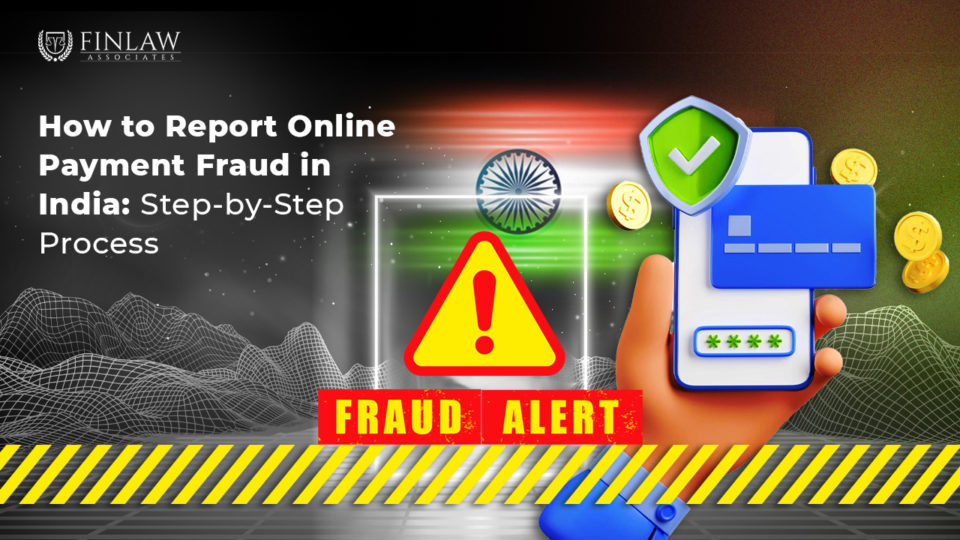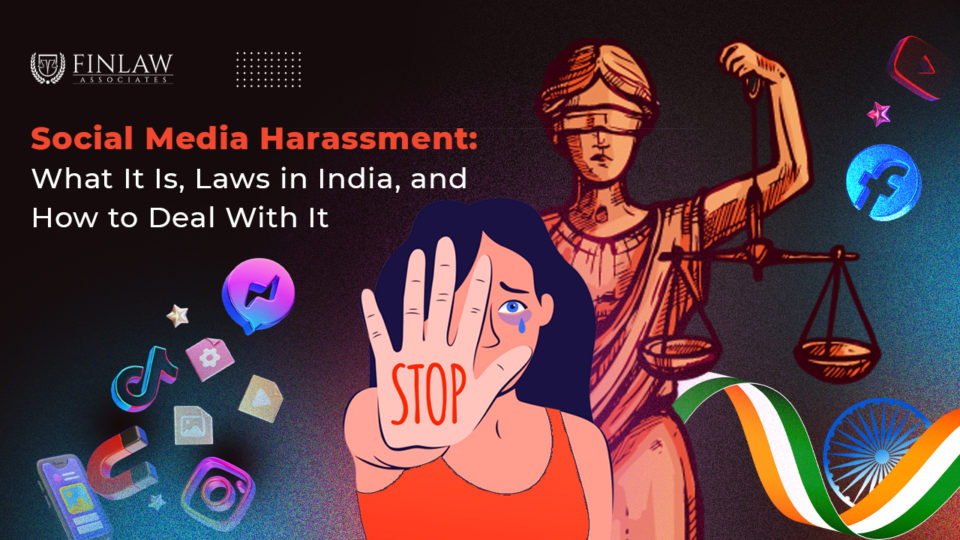
Impact of Cyber Crime on Businesses in India: How to Protect Your Business and Stay Resilient
November 27, 2024
Understanding the Whistleblower Protection Act 2014 in India: Key Provisions and Objectives
January 1, 2025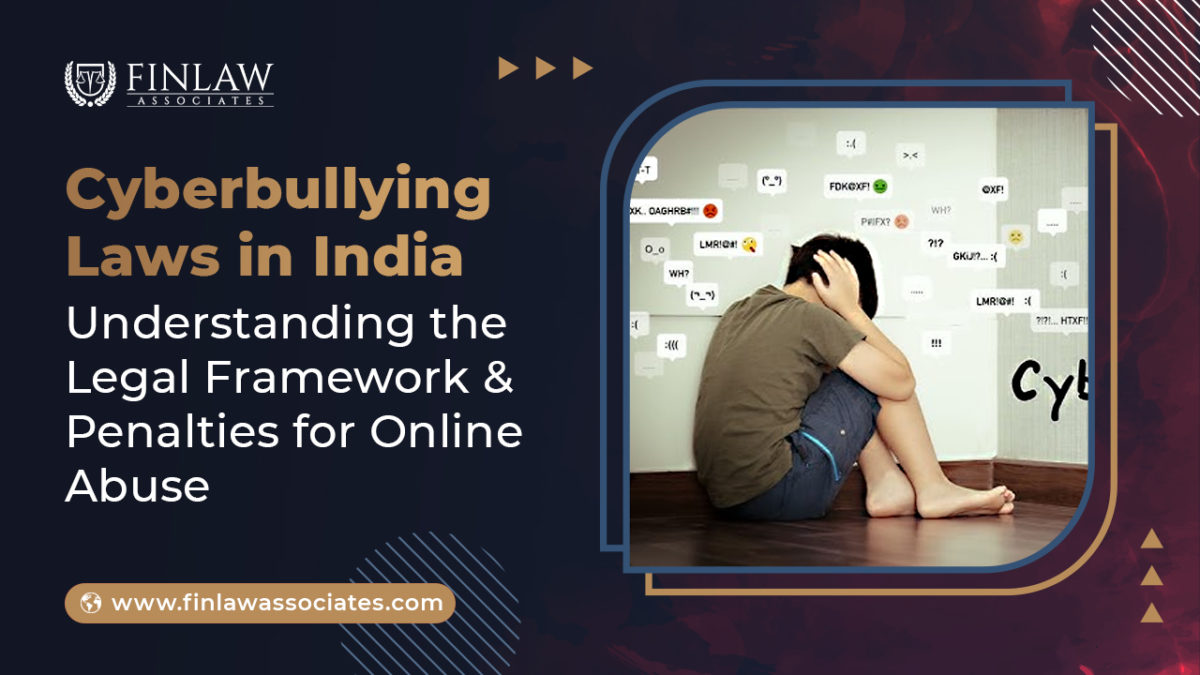
Table of contents
- The Rise of Cyberbullying in India
- Cyberbullying Laws in India
- The Bharatiya Nyaya Sanhita, BNS
- Juvenile Justice (Care and Protection of Children) Act, 2015
- The Role of Social Media Platforms
- Punishments for Cyberbullying in India
- How To Report Cyberbullying in India
- Global Comparison: Cyberbullying Laws in India and Other Countries
- Conclusion
The fast expansion of the internet and the growing popularity of social media platforms have altered how people communicate, connect, and even create relationships. While the internet has provided innumerable benefits, it has also introduced new sorts of harm. Cyberbullying is one such destructive phenomena that has become a severe concern across the world, especially in India. Cyberbullying is defined as the use of internet media to purposefully harass, intimidate, or hurt someone. Online abuse, whether through social media, messaging apps, or websites, is becoming increasingly prevalent, especially among vulnerable populations such as children and teens.
In this article, we will look at cyberbullying laws in India, including the legislative framework that governs such acts, the fines, and the actions that the government and other parties are taking to protect people from online harassment and abuse. By looking into these issues, we may gain a better understanding of the legal instruments available to combat cyberbullying and the rights of those who may become victims of online harassment.
The Rise of Cyberbullying in India
With the rapid growth of the internet, India has seen a tremendous increase in the number of individuals utilizing social media sites such as Facebook, Twitter, Instagram, WhatsApp, and YouTube. While these platforms have various benefits, like the ability to connect individuals across geographies, social media have also become a breeding ground for bad behaviours such as cyberbullying.
Cyberbullying may take many different forms, ranging from simple name-calling and nasty comments to more serious actions such as spreading false rumours, posting embarrassing images, or even threatening violence. The internet's anonymity and lack of rapid consequences for online conduct have contributed to the prevalence of cyberbullying in India.
Some common forms of cyberbullying are
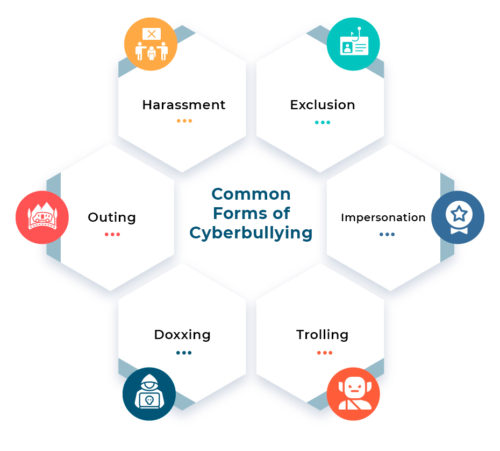
- Harassment: Harassment is defined as the repeated sending of abusive or threatening communications via email or social media.
- Outing: Sharing sensitive or embarrassing information, images, or videos about someone without their permission.
- Doxxing: It is the practice of publishing personal information such as home addresses or phone numbers with the goal of causing harm.
- Trolling: It is the act of posting inflammatory or abusive comments in order to provoke others, usually to obtain attention or create distress.
- Impersonation: Impersonation is the act of creating a fake account or exploiting another person's identity online in order to deceive, harass, or damage them.
- Exclusion: Exclusion is the deliberate removal of someone from online groups, forums, or social circles in order to cause emotional distress.
While cyberbullying is not a novel idea, its online expression has presented issues in terms of legal protection and enforcement in India. As technology advances, so do the ways in which bullies can injure others online.
Cyberbullying Laws in India
The Information Technology Act of 2000 was originally intended to offer legal recognition for electronic commerce and promote the expansion of the internet in India. However, as online crimes like cyberbullying became increasingly common, the IT Act was updated to handle these new concerns.
The following main sections of the IT Act address cyberbullying:
1. Section 66A: Sending Offensive Messages (Prior to Repeal)
Section 66A of the IT Act, which was created to address offensive internet messages, was a critical element for combating cyberbullying. It prohibited the transmission of insulting or menacing messages via communication services, social media, or email. This area was frequently used in cases when people were harassed or intimidated online.
However, in 2015, the Supreme Court of India declared Section 66A unconstitutional because it was extremely ambiguous and restricted freedom of speech and expression under Article 19(1)(a) of the Indian Constitution. Despite being repealed, this clause had a considerable impact on the approach to cyberbullying laws in India.
2. Section 66C: Identity Theft and Impersonation
Section 66C of the IT Act makes it illegal to perpetrate identity theft or impersonate someone online. This is especially true in cases of cyberbullying, in which people create phony identities or mimic others in order to destroy their reputation or harass them. This clause penalizes identity theft with up to 3 years of imprisonment and a fine of up to ₹1 lakh.
3. Section 66E: Violation of Privacy
The violation of privacy clause (Section 66E) makes it illegal to capture, publish, or transmit intimate or private photos of another person without their permission. Cyberbullies frequently publish private or embarrassing images to humiliate or shame victims, making this part of the IT Act extremely relevant to instances of cyberbullying.
4. Section 67: Punishment for Obscene Content
Section 67 addresses the publication or transmission of obscene content via electronic means. It is primarily aimed at the online publication of obscene material and has been utilized in cases of cyberbullying where harmful, graphic, or libelous content is posted to frighten or harass people.
The Bharatiya Nyaya Sanhita, BNS
In addition to the IT Act, the Bharatiya Nyaya Sanhita (BNS) provides legal remedies for cyberbullying-related offenses. The BNS has several laws that can be used to address situations of internet harassment, stalking, and defamation.
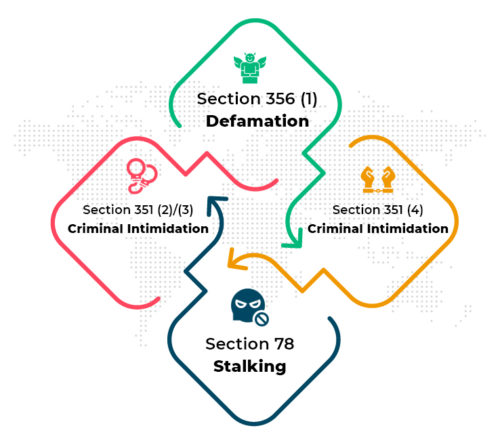
1. Section 356 (1) – Defamation:
Defamation occurs when someone makes false and damaging claims about another person with the intent to hurt their reputation. Defamation in cyberbullying frequently takes the form of spreading false rumors, uploading harmful content, or revealing embarrassing facts. Such crimes are criminalized under BNS Section 356 (1), with penalties ranging from imprisonment to fines.
2. Section 351 (2)/(3) – Criminal Intimidation:
Threatening someone with injury or harm is a criminal offense under Section 351 (2)/(3) of the BNS. Criminal intimidation in cyberbullying frequently takes the form of online threats delivered via messages, emails, or social media platforms. This clause empowers cyberbullying victims to seek judicial redress when threats are made against them.
3. Section 78 – Stalking:
Cyberstalking is a severe type of cyberbullying, and Section 78 of the BNS expressly targets it. The clause criminalizes stalking, including internet stalking, which is the act of continuously observing a person's online activity, sending unsolicited communications, or participating in behavior that intrudes on the victim's privacy. Cyberbullies frequently use online stalking to frighten and torment their victims.
4. Section 351 (4) – Criminal Intimidation by Anonymous Communication:
Section 351 (4) of the BNS makes it illegal to threaten someone through anonymous communication. In many situations of cyberbullying, the attacker conceals their identity, making it difficult for the victim to pursue justice. This provision addresses the issue and provides for prosecution, even if the bully remains nameless.
Juvenile Justice (Care and Protection of Children) Act, 2015
Cyberbullying involving kids, whether as victims or perpetrators, is addressed by the Juvenile Justice (Care and Protection of Children) Act of 2015. The statute requires the protection of children against abuse, exploitation, and dangerous online content. It also offers rehabilitation and counseling to adolescents who engage in cyberbullying. Rather than focusing exclusively on punishment, the law prioritizes reform and rehabilitation for juvenile offenders.
The Role of Social Media Platforms
Social media platforms play an important role in preventing cyberbullying. In 2021, the Indian government issued tighter Information Technology (Intermediary Guidelines and Digital Media Ethics Code) regulations, imposing new requirements on social media platforms such as Facebook, Instagram, and Twitter. These standards urge platforms to proactively monitor and remove offensive information, as well as identify the source of harmful material within a specified timeframe.
Failure to comply with these standards may result in the loss of the platform's safe harbor immunity, which means they may be held liable for the content posted by their users. Additionally, the guidelines require social media firms to provide an internal grievance redressal procedure for users to report abusive content, including cyberbullying.
Punishments for Cyberbullying in India
The Cyber Crime Punishment in India vary according to the precise statutes under which the perpetrator is charged. These cyber bullying penalties typically involve fines, incarceration, or both.
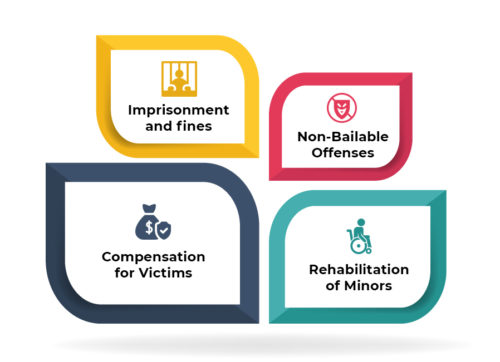
1. Imprisonment and fines:
Offenders found guilty of cyberbullying under sections 66C (identity theft), 66E (privacy violations), and 67 (obscene content) risk jail sentences ranging from one to five years, depending on the gravity of the offense. The punishments for these infractions can range from ₹1 lakh to ₹5 lakh.
More serious acts, such as stalking or criminal intimidation, can result in harsher punishments, including longer jail sentences and larger fines.
2. Non-Bailable Offenses:
Certain cyberbullying charges, such as child pornography or cyberstalking, are considered non-bailable. This means that the accused will not be granted bail quickly and would have to go through a more rigorous legal process.
3. Compensation for Victims:
In addition to jail or penalties, victims of cyberbullying in India may seek restitution for the harm done. The courts may order the offender to compensate the victim for mental suffering, reputational damage, or financial losses resulting from the bullying. This is a sort of restitution for the victim's suffering.
4. Rehabilitation of Minors:
For minors who engage in cyberbullying, the legislation promotes rehabilitation above punishment. Minors who engage in cyberbullying may be required by the Juvenile Justice Act to receive counseling, participate in awareness programs, or perform community service.
How To Report Cyberbullying in India
To prevent cyberbullying, the Indian government has established many avenues for reporting cybercrime. The National Cyber Crime Reporting Portal (cybercrime.gov.in) enables victims to report cyberbullying, online harassment, and other cybercrimes to law enforcement agencies. Furthermore, many state governments have established specialist cybercrime units to investigate such charges.
Social media networks also include reporting capabilities, which allow users to flag information that they believe violates the platform's policies or is cyberbullying. Once reported, these platforms must take action by deleting the content or blocking the offending accounts.
Global Comparison: Cyberbullying Laws in India and Other Countries
Cyberbullying laws vary greatly around the world, with different countries implementing distinct legal frameworks to combat online harassment. Here's a quick comparison of cyberbullying legislation in India, the US, the UK, Australia, and Canada:

1. India:
India's online bullying laws are primarily governed by the Information Technology Act of 2000 and the Indian Penal Code. Sections 66C, 66E, and 67 address identity theft, privacy infringement, and obscene content, respectively. India's 2021 Intermediary Guidelines require social media platforms to filter dangerous content. However, enforcement remains an issue, and cyberbullying cases frequently see delays.
2. United States:
In the United States, cyber abuse laws differ by state, and there is no nationwide statute. Many jurisdictions, like California and New Jersey, have particular anti-cyberbullying laws, and the Megan Meier Cyberbullying Prevention Act aims to outlaw cyberbullying on a federal level. The Communications Decency Act (CDA) protects platforms from user-generated content, which makes regulation more difficult. Cyberbullying regulations typically target kids and schools.
3. United Kingdom:
The UK has strict internet bullying laws, such as the Malicious Communications Act and the Protection from Harassment Act, which encompass online harassment, stalking, and defamation. The Online Safety Bill (2021) reinforces rules by mandating social media platforms to delete harmful content and implement greater moderation. UK legislation give a larger scope for combating online harassment.
4. Australia:
Australia has strong cyberbullying regulations, particularly for minors. The Cyberbullying Law (2019) mandates the removal of damaging content and imposes fines on violators. The eSafety Commissioner regulates online safety and has the authority to punish sites that fail to remove cyberbullying information. Australia's laws are quite proactive in protecting children and combating bad online activity.
5. Canada:
In Canada, cyberbullying is regulated by the Criminal Code, particularly Bill C-13, which criminalizes the non-consensual sharing of intimate pictures. Provincial laws, such as those in British Columbia, also safeguard students in schools. Canadian laws address harassment, the spread of sexual content, and the safety of minors.
Conclusion
Cyberbullying in India is a developing concern, and the legal framework for dealing with online harassment and abuse has grown over time. The Information Technology Act and the Indian Penal Code both have provisions for prosecuting offenders and safeguarding victims of cyberbullying. While great progress has been made, much more effort remains to be done to raise awareness, improve enforcement procedures, and ensure that all individuals, particularly minors, are safeguarded from the negative impacts of online abuse.
Individuals who understand cyberbullying laws in India can better defend themselves from online harassment and seek justice when needed. However, combating online bullying is not just the responsibility of the government and law enforcement organizations. Social media sites, technological businesses, and the general public must all collaborate to build a more secure and responsible online environment. Together, we can lower the frequency of cyberbullying and protect individuals from the hazards of online abuse.

